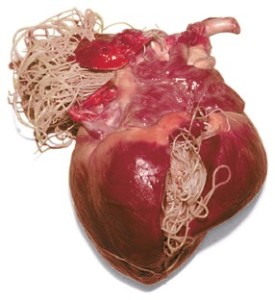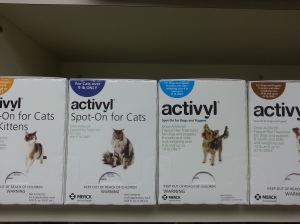While few of these bites are serious, dog bites to children are a serious and scary problem. Thankfully, there are many steps a parent and a child can take to lower his risk.
The first, and I think the most important, is for parents to closely supervise their childrens’ interactions with dogs. This is especially important with new or strange dogs, but it is also important with the family dog. Dogs are animals. Sometimes they lose their patience. Sometimes their warnings go unheeded and they end up warning more strongly than tender human flesh can tolerate. Sometimes they’re in pain.
The best way to counteract this unpredictability is to learn to read and understand the dog’s body language and comfort level. While some dogs will tolerate a child climbing all over them, but for most dogs it is very stressful. So even though the dog is putting up with it, he might be trying very hard to communicate how uncomfortable he is with the situation.
We have fallen into the habit of “Disney-fying” dogs. Yes, dogs can be man’s best friend, but they are still living, breathing, feeling animals who don’t always respond in the ways we want or expect.
Here is an excellent guide to understanding how to read stress signals from your dog. Often the easiest to see are yawning, tucked tail, pinned-back ears, nose-licking, and trying to avoid the situation. All of these need to be cues to parents that it is time to intervene now because the risk of something bad happening is steadily increasing.
Children, especially older ones, can be taught to recognize friendly vs stressed vs go away messages from dogs. Doggone Safe’s Learn to be a Dog Detective is a terrific child-oriented webpage for helping kids understand what a dog is feeling at any given time and what the best response is.
Teach your child that if he is approached by a strange, loose dog, do not run but instead Be a Tree. Running or screaming makes a child more interesting and a more appealing target. Being still and quiet is boring, and less interesting to a dog.
It is also vitally important to teach children not to approach strange dogs without the owner present. Statistically, dogs who are chained, kenneled, or contained in a backyard are a high bite risk. They are often poorly socialized with people and protective of their space. This can be a recipe for disaster if a child approaches. Between 1976 and 2001, at least 98 people were killed by chained dogs. 92 were children.
If an owner is present, the child must know to ask first before trying to pet the dog. Not all dogs are comfortable with children, and some dogs, such as service dogs, should not be interrupted from their work. If the owner says it is ok, the child should be taught to extend a fist for the dog to sniff and to let the dog come to him. If the dog wants to say hi, he will!
Let sleeping dogs lie! Teach your child that if the dog is sleeping, chewing a bone, or otherwise occupied by himself, it is best to leave him alone.
Give your dog a safe place to go when he wants to be left alone, and teach your child to respect that. I cringe when I see pictures of kids in crates with dogs. If things were to go bad, they could go very bad very quickly with neither dog nor child able to quickly escape.
Teach your child to never try to take something from a dog that the dog will not willingly give up. A hard stare, a stiff body, crouching over the item, and growling are all signs that your child needs to back off and go to an adult if the dog has something that he shouldn’t. Also, a wagging tail is not necessarily a sign of a happy dog! A loose, full-body wave is a sign of happiness. A stiff or slow wag is not.
Some older children can be taught to “trade”. Trading is taking something that the dog values highly (food, a favorite toy), and offering it to the dog in exchange for whatever he is guarding. If the dog shows desire for the trade object, toss it several feet away so that you are able to retrieve the item while the dog is occupied away from it.
Resource guarding can become very dangerous, so getting in contact with a trainer or behaviorist as soon as possible is highly recommended.
Last but not least, please do not ever leave an infant alone with a dog, even if the baby is in a crib. Babies smell funny, they sound funny, and they move funny. All of this has the potential to trigger prey drive in a dog who would never hurt someone he recognized as a human.
With all of these things in mind, it is possible to minimize the risk of your child being bitten either by a strange dog or the family dog. Kids and dogs can make a great combination, but keeping safety in mind is a must!
Other resources:
Doggone Safe!
Be a Tree!
And for all things dog-bite-statistics, The National Canine Research Council













